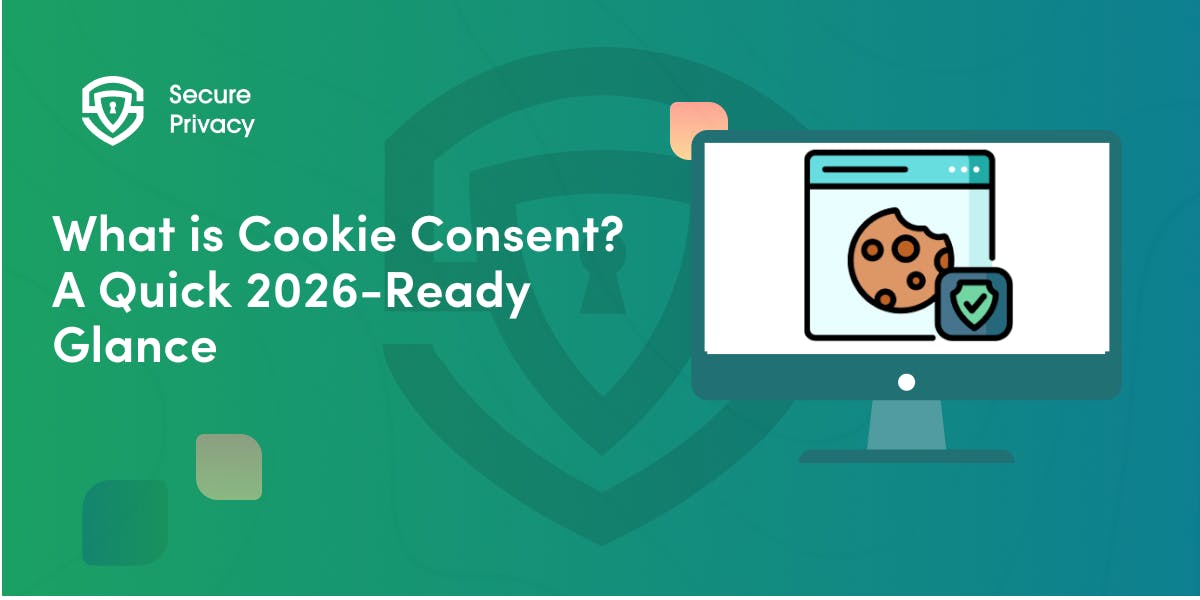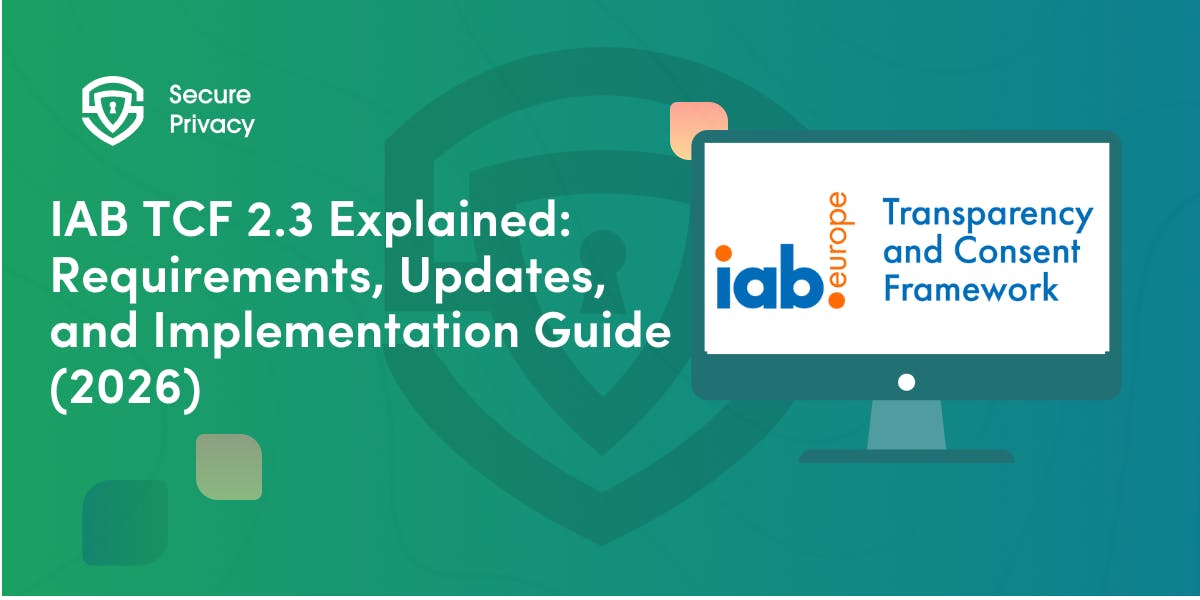Chrome Third-Party Cookie Compliance and Privacy Sandbox 2025: Strategic Approaches to Third-Party Cookie Retention
For years, the digital marketing world braced for "cookie-pocalypse"—the moment when Google would eliminate third-party cookies from Chrome and fundamentally break traditional online advertising. Companies spent millions preparing for a cookieless future, developing new tracking methods and rebuilding their marketing infrastructure. Then, in July 2024, Google shocked the industry by announcing it would not eliminate third-party cookies after all.
This dramatic policy reversal represents one of the most significant shifts in digital privacy strategy in recent years. Instead of forcing cookie deprecation, Google now offers users a choice about whether to allow or block third-party cookies. This decision affects every business that relies on digital marketing, from small e-commerce sites to global advertising networks. The implications extend far beyond technical implementation to reshape compliance strategies, competitive dynamics, and the entire future of online privacy.
Understanding this shift becomes essential for any organization operating in the digital economy. The retention of third-party cookies doesn't mean returning to privacy practices of the past—it creates a complex new environment where traditional tracking coexists with emerging privacy technologies. Success requires navigating both established cookie management requirements and new user-choice mechanisms while preparing for an uncertain future.
How Google Completely Changed Course on Cookie Policies
Google's journey with third-party cookies reflects the complex pressures facing major technology companies as they balance privacy concerns, business interests, and regulatory requirements.
From Ambitious Deadlines to Repeated Delays
Google first announced its intention to eliminate third-party cookies by 2022 in January 2020, positioning this move as part of a broader privacy initiative. This timeline proved overly ambitious as the company faced mounting challenges from multiple directions. The advertising industry pushed back hard against cookie deprecation, citing concerns about economic disruption and the lack of adequate replacement technologies.
Technical complexities also contributed to delays as Google discovered that Privacy Sandbox alternatives couldn't fully replace cookie functionality within the original timeframe. The company repeatedly postponed implementation, moving the deadline first to mid-2023, then through various delays in July 2022, December 2023, and April 2024. Each postponement reflected growing recognition that cookie deprecation would be more disruptive and complex than initially anticipated.
Regulatory oversight added another layer of complexity to Google's decision-making process. The UK Competition and Markets Authority launched an investigation into Privacy Sandbox browser changes, raising concerns about potential competitive advantages for Google's advertising business. This regulatory scrutiny forced Google to carefully consider the broader implications of cookie deprecation beyond privacy protection.
The July 2024 Policy Reversal
The most significant shift occurred in July 2024 when Google clarified that it had no plan to unilaterally deprecate third-party cookies or force users into new models without consent. This decision marked a fundamental departure from years of deprecation planning, instead adopting a user-choice interface that empowers individuals to decide whether to block or allow third-party cookies globally.
This policy reversal acknowledged the reality that cookie deprecation was creating more problems than it solved for many stakeholders in the digital ecosystem. Rather than forcing change through browser policy, Google shifted toward empowering user choice while continuing to develop privacy-preserving alternatives through Privacy Sandbox. This approach attempts to balance privacy advancement with ecosystem stability.
The decision also reflected Google's recognition that successful privacy improvements require broader industry consensus rather than unilateral action by a single browser vendor. By maintaining cookies while developing alternatives, Google creates space for gradual transition based on user adoption and industry readiness rather than forced timelines.
Current Status and Technical Requirements
As of 2025, third-party cookies remain enabled by default in Chrome, representing a significant departure from the original deprecation timeline. However, this doesn't mean returning to previous technical practices. Third-party cookies must still include SameSite=None; Secure attributes, a requirement that has been in place since Chrome 80 to ensure proper cross-site functionality.
The retention of third-party cookies creates a hybrid environment where traditional tracking mechanisms coexist with emerging privacy-preserving technologies. Privacy Sandbox continues to exist and develop, but its role has shifted from cookie replacement to privacy enhancement. This coexistence allows businesses to maintain existing strategies while gradually incorporating new approaches.
For businesses, this environment requires managing both traditional cookie compliance and emerging privacy standards simultaneously. Organizations must ensure their implementations work correctly with current cookie requirements while remaining prepared for potential future changes as Privacy Sandbox technologies mature and user preferences evolve.
Regulatory Oversight Shapes the Privacy Landscape
Government authorities continue playing crucial roles in determining how major technology companies implement privacy changes.
UK Competition and Markets Authority Investigation
The UK Competition and Markets Authority has been instrumental in shaping Google's approach to third-party cookies through its ongoing Privacy Sandbox investigation. The CMA accepted commitments from Google that address competition concerns related to removing third-party cookies and other Chrome functionalities. This regulatory oversight ensures that privacy changes don't create unfair competitive advantages for Google's advertising business.
In April 2025, Google announced it would not roll out new standalone prompts for third-party cookies, restating its intention not to deprecate them entirely. The CMA is currently considering the implications of this announcement for Google's existing commitments and determining appropriate next steps. This ongoing review process demonstrates the complex interplay between competition law, privacy protection, and technological innovation.
The CMA's quarterly reporting requirements create transparency around Google's compliance efforts, with reports covering periods from January 2025 onwards providing detailed insights into Privacy Sandbox developments. These reports serve as valuable resources for businesses seeking to understand the evolving regulatory landscape and adjust their compliance strategies accordingly.
Compliance Challenges in the New Environment
Organizations operating in the current environment must navigate complex compliance requirements that encompass both traditional cookie management and emerging privacy standards. The retention of third-party cookies means that existing data protection obligations under regulations like GDPR and CCPA continue applying in full force.
However, the introduction of user-choice mechanisms creates new compliance considerations around consent management and user preference implementation. Businesses must ensure their cookie management systems can accommodate Chrome's new user-choice interface while maintaining compliance with existing privacy regulations. This includes implementing robust consent management platforms that can respond to user preferences expressed through Chrome's settings.
The coexistence of traditional cookies and privacy-preserving alternatives requires organizations to develop hybrid compliance strategies that address multiple technological approaches simultaneously. This complexity demands careful planning and ongoing monitoring to ensure all approaches remain compliant with evolving regulatory requirements.
Privacy Sandbox Transforms from Replacement to Enhancement
Google's Privacy Sandbox initiative has undergone fundamental strategic changes following the decision to retain third-party cookies.
Strategic Direction Changes
Originally designed as a comprehensive replacement for third-party cookies, Privacy Sandbox now serves a different role in supporting the digital advertising ecosystem. Google's Anthony Chavez acknowledged this shift by noting that "Privacy Sandbox APIs may have a different role to play in supporting the ecosystem" following the cookie retention announcement.
This transformation represents a significant recalibration of Google's privacy strategy, moving from a replacement model to an enhancement model. Rather than replacing existing tracking mechanisms, Privacy Sandbox technologies now function as complementary tools that provide additional privacy protections and alternative targeting methods. This approach allows businesses to maintain existing cookie-based strategies while gradually incorporating privacy-preserving alternatives.
The continued development of Privacy Sandbox technologies, including Topics API and other privacy-preserving advertising tools, suggests that Google remains committed to advancing privacy standards in digital advertising. However, the reduced urgency around cookie replacement allows for more measured implementation timelines and greater industry consultation in the development process.
Enhanced Privacy in Specific Contexts
Google continues enhancing tracking protections in Chrome's Incognito mode, which already blocks third-party cookies by default. These enhancements include IP Protection, planned for launch in Q3 2025. This development demonstrates Google's commitment to privacy advancement even while maintaining third-party cookie support in regular browsing mode.
The dual approach of maintaining cookies in standard browsing while enhancing privacy in Incognito mode creates a graduated privacy model that accommodates different user preferences and use cases. For businesses, this means developing strategies that function effectively across both environments, ensuring essential services remain functional regardless of user privacy settings.
This graduated approach also provides valuable testing opportunities for organizations preparing for potential future changes. By ensuring functionality in cookie-blocked environments like Incognito mode, businesses can evaluate their readiness for broader cookie restrictions while maintaining full functionality in standard browsing contexts.
Strategic Implementation for Cookie Retention
Organizations must adapt their technical and marketing strategies to thrive in the current hybrid privacy environment.
Technical Implementation Requirements
Organizations seeking to maintain effective third-party cookie strategies must adapt to the evolving browser landscape while preparing for potential future changes. The requirement for third-party cookies to include SameSite=None; Secure attributes remains in effect, necessitating proper technical implementation to ensure cross-site functionality.
Server-side tracking has become a crucial component of comprehensive data control strategies, offering greater accuracy and security compared to traditional client-side approaches. As privacy awareness increases and browser restrictions evolve, server-side implementations provide more reliable data collection mechanisms that are less susceptible to browser-based blocking or user modifications.
Businesses should implement comprehensive testing frameworks to ensure their cookie strategies function correctly across different browser configurations and user preference settings. This includes testing functionality when users opt to block third-party cookies through Chrome's new user-choice interface, ensuring essential services remain operational while respecting user privacy preferences.
Cookieless Marketing Integration
The development of cookieless marketing strategies remains essential for organizations seeking to reduce dependence on third-party cookies while maintaining effective audience engagement. These strategies focus on privacy-conscious data collection methods, including first-party data utilization, contextual advertising, and privacy-preserving audience targeting approaches.
Enhanced user privacy and improved compliance with data protection laws represent significant benefits of cookieless marketing approaches. By reducing reliance on third-party tracking, organizations can build stronger trust relationships with their audiences while simplifying their compliance obligations. This approach aligns with growing consumer expectations around data privacy and provides competitive advantages.
The integration of cookieless marketing strategies with traditional cookie-based approaches creates opportunities for hybrid implementations that maximize both effectiveness and privacy protection. Organizations can use this transition period to gradually shift toward more privacy-preserving methods while maintaining the benefits of existing cookie-based strategies.
Future-Proofing Strategies
Despite current third-party cookie retention, organizations must prepare for potential future changes in browser policies, regulatory requirements, and industry standards. The development of robust first-party data strategies, implementation of privacy-preserving technologies, and creation of flexible marketing infrastructures will ensure resilience against future disruptions.
Investment in emerging technologies such as Privacy Sandbox APIs, server-side tracking implementations, and advanced consent management platforms will position organizations to adapt quickly to future changes while maintaining compliance with evolving privacy standards. This strategic approach ensures organizations can respond effectively to regulatory changes, browser updates, and shifting consumer expectations around data privacy.
The testing group approach currently being implemented by Google provides valuable insights into user behavior and system performance under cookie-restricted conditions. Organizations should monitor these developments closely and participate in testing opportunities when available to gain practical experience with cookieless environments.
Building Resilient Privacy Strategies
The landscape of third-party cookie management and privacy compliance has undergone fundamental transformation, with Google's decision to retain third-party cookies representing a significant departure from years of planned deprecation. This policy shift creates new opportunities for businesses to maintain existing cookie-based strategies while gradually incorporating privacy-preserving alternatives.
However, this environment also introduces complexity around user choice mechanisms and hybrid compliance requirements. The ongoing regulatory oversight by authorities like the UK Competition and Markets Authority demonstrates the continued importance of balancing privacy protection, competition concerns, and technological innovation in digital advertising.
Organizations navigating this environment must develop comprehensive strategies that accommodate both traditional cookie management and emerging privacy-preserving technologies. The retention of third-party cookies provides breathing room for measured implementation of cookieless marketing strategies, server-side tracking solutions, and Privacy Sandbox technologies, but doesn't eliminate the need for privacy-focused innovation.
The introduction of user choice mechanisms in Chrome creates new compliance considerations that require robust consent management and flexible technical implementations. Success depends on organizations' ability to balance effectiveness with privacy protection while preparing for potential future changes in browser policies and regulatory requirements.
The current environment provides valuable opportunities for testing and optimization of hybrid approaches that combine traditional tracking mechanisms with privacy-preserving alternatives. Organizations that invest in this strategic flexibility while maintaining strong compliance frameworks will be best positioned to thrive in the evolving digital privacy landscape, regardless of future policy changes or technological developments.
Frequently Asked Questions
Does Google's decision to keep third-party cookies mean we can ignore privacy compliance?
No, existing privacy regulations like GDPR and CCPA continue to apply in full force. The retention of third-party cookies doesn't change legal obligations around consent management, data protection, or user rights. Additionally, Chrome's new user-choice interface creates additional compliance considerations around respecting user preferences for cookie blocking.
How do Chrome's new user choice controls affect our cookie strategy?
Chrome now allows users to globally block or allow third-party cookies through browser settings. Your cookie implementation must function correctly when users choose to block cookies, ensuring essential services remain operational while respecting privacy preferences. This requires testing across different user preference configurations and potentially implementing alternative approaches for cookie-blocked scenarios.
Should we continue investing in cookieless marketing strategies?
Yes, cookieless strategies remain valuable for reducing dependence on third-party tracking, improving privacy compliance, and future-proofing against potential policy changes. The current environment provides an ideal opportunity to gradually implement privacy-preserving approaches while maintaining existing cookie-based strategies, creating hybrid implementations that maximize both effectiveness and privacy protection.
What happens to Google's Privacy Sandbox now that cookies are staying?
Privacy Sandbox continues developing but has shifted from being a cookie replacement to a privacy enhancement tool. These technologies now serve as complementary options that provide additional privacy protections and alternative targeting methods rather than mandatory replacements for existing tracking mechanisms. Organizations can gradually adopt Privacy Sandbox APIs based on their specific needs and user preferences.
How should we prepare for potential future changes to cookie policies?
Develop robust first-party data strategies, implement server-side tracking capabilities, create flexible technical architectures that can adapt to different privacy environments, and invest in emerging privacy-preserving technologies. Monitor Google's testing groups and regulatory developments closely, and ensure your systems function correctly in cookie-blocked environments like Chrome's Incognito mode.
What technical requirements still apply to third-party cookies in Chrome?
Third-party cookies must include SameSite=None; Secure attributes to function properly across sites. This requirement has been in place since Chrome 80 and continues to apply. Additionally, cookies must be served over HTTPS connections, and organizations should implement proper cookie management practices that respect user preferences and comply with applicable privacy regulations.
How do regulatory authorities view Google's cookie retention decision?
The UK Competition and Markets Authority continues monitoring Google's commitments through ongoing investigations and quarterly reporting requirements. Other regulatory bodies are evaluating the implications for competition and privacy protection. Organizations should stay informed about regulatory developments and ensure their cookie strategies remain compliant with evolving regulatory guidance and enforcement priorities.
Get Started For Free with the
#1 Cookie Consent Platform.
No credit card required

What is Cookie Consent? A Quick 2026-Ready Glance
Your website loads. Cookies track users. But without proper cookie consent, you're violating GDPR — risking fines up to €20 million or 4% of global revenue. Cookie consent is the legally required mechanism by which websites obtain explicit user approval before deploying non-essential tracking technologies. This requirement stems from GDPR Article 4(11) and the ePrivacy Directive, mandating that consent must be freely given, specific, informed, and unambiguous.
- Legal & News

DSAR Tools Explained: Best Software for Automating Privacy Requests
You're drowning in data subject access requests. Manual searches through dozens of systems miss regulatory deadlines and expose organizations to fines starting at $2,500 per violation. The solution? DSAR tools — purpose-built software that automates the entire process of responding to data subject access requests, from intake to delivery.
- Legal & News

IAB TCF 2.3 Explained: Requirements, Updates, and Implementation Guide (2026)
Your ad revenue dropped 40% overnight. Google stopped bidding on your inventory. Your DSP partners flagged your traffic as non-compliant. The culprit? An outdated TCF 2.2 consent string after the February 2026 enforcement deadline.
- Legal & News
- Cookie Consent

